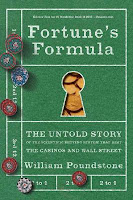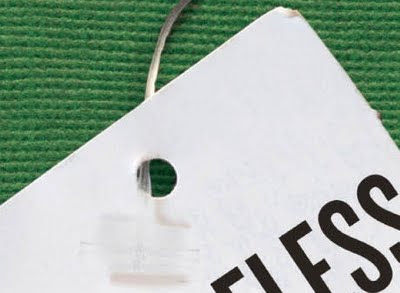 Some readers may be wondering why the cover of my new book, Priceless, looks something like that of Chris Anderson's recent book Free. Did my publisher rip off the Free design? Short answer: no.
Some readers may be wondering why the cover of my new book, Priceless, looks something like that of Chris Anderson's recent book Free. Did my publisher rip off the Free design? Short answer: no."It takes as long to make a book as to make a baby." That was the wry industry maxim back when publishers took three-martini lunches and Bennett Cerf was a panelist on What's My Line?. From finished manuscript to physical books took nine months. For reasons mysterious to almost everyone, the digital age hasn't speeded things up one iota. You might think that, now that manuscripts don't have to be rekeyed by typsetters, they could have shaved it to, oh, eight months? Nope. It's still nine. Anyway, the Priceless cover was created a couple of months before Free came out — notwithstanding the fact that Priceless is being published in January, six months after the Anderson book.

We started bouncing around ideas for a cover in April 2009. Publisher Thomas LeBien had the notion of putting a fake price on the jacket and having it "marked down" to the real price. By the end of May, the artist had developed this idea into the cover you see above. Hill and Wang had had success with a trompe l'oeil cover for my Fortune's Formula (left). The fake roulette chips made people want to pick up the book, and maybe that had something to do with the book's success. The Priceless design continued this theme with a very realistic pricetag projecting from a clothbound volume (this is all a printed jacket, of course). I loved the cover, and so did seemingly everyone who saw it. It was quickly approved and went out in the Hill and Wang catalogs.
Then on June 24, I saw a piece in the Los Angeles Times about Anderson's book, with an illustration of the cover. I e-mailed my editor, Joe Wisnovsky, and after due editorial handwringing, it was decided to stick with the cover we all liked. The reasoning was:
• The books are being published six months apart, and that makes it a bit less awkward.
• The two books' subject matter is quite distinct. Priceless is about the hidden psychology of prices, and Free is about giving away free content in the Internet, to promote the sale of something else.
• As mortifying as this might be to us (we thought we were so original!), it's not such a big deal with book buyers. Many won't notice, anyway.
• Some Chris Anderson fans might falsely assume that Priceless is a follow-up or response to Free. It's not, but if they want to buy it, it's a free country.
 • Mainly, we just thought the cover worked and there was no point in switching to a less appealing cover to avoid an honest coincidence. The verisimitude is amazing, particularly in the actual object. Joe Wisnovsky showed both covers, side by side, to his brother-in-law, a French architect and talented amateur artist. He pronounced ours far more intriguing and eye-catching. Okay, it's like passing around baby photos — I'm sure that Chris Anderson likes his cover better. But I think it's a cool cover.
• Mainly, we just thought the cover worked and there was no point in switching to a less appealing cover to avoid an honest coincidence. The verisimitude is amazing, particularly in the actual object. Joe Wisnovsky showed both covers, side by side, to his brother-in-law, a French architect and talented amateur artist. He pronounced ours far more intriguing and eye-catching. Okay, it's like passing around baby photos — I'm sure that Chris Anderson likes his cover better. But I think it's a cool cover. Just in case you're wondering, the hardcover version of Free costs $29.99, and Priceless is $26.99. Yes, that's another similarity: both use charm prices (ending in "9").


